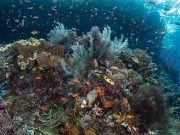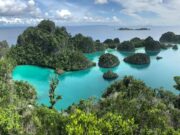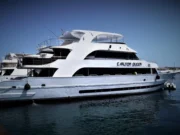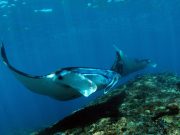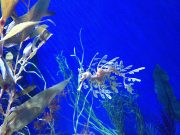Marine biologist Anna Sobral founded Manta Catalog Azores in 2012 to develop understanding of manta and devil rays. The Azores is one of the few places that these rays are known to congregate: the large Sicklefin devil rays being especially abundant. The Manta Catalog enables ordinary scuba divers to help study these mysterious creatures and ultimately contribute to their protection.
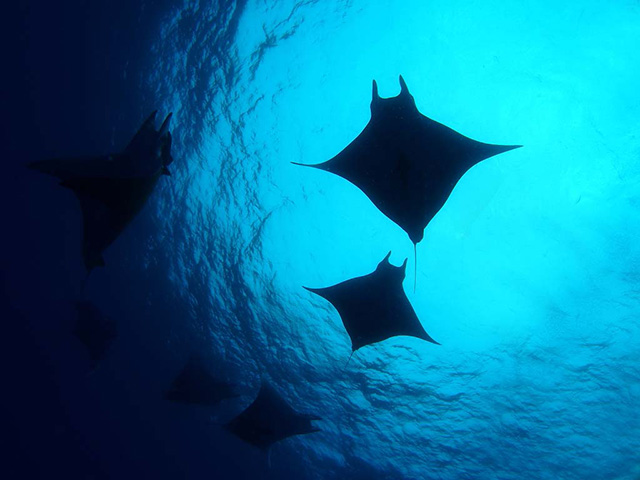
What inspired you to set up the project, and what challenges did you have to overcome?
I had just left Mozambique, where I had been participating on a whale shark and manta ray conservation project, when I came to the Azores. Once here I heard for the first time about these groups of devil rays that attracted more and more divers to the Azores. The species in question, at the time, had a “Data Deficient” conservation status on the Red List of Threatened Species of the IUCN. Species are listed as “Data Deficient” when, as the name implies, there is not enough data about them and their populations to be able to estimate their conservation status. The fact that these are unique aggregations in the world, makes them crucial for the study of this species. Having divers from all over the world travelling to the Azores to see them made the creation of this citizen-science based project make perfect sense.
At the time photo-ID was already widely used to study manta rays, but this was the first attempt to use it for the study of the Sicklefin devil ray. I would say the biggest challenge was to get the project off the ground, knowing this would be a long-term project, but without knowing if it would work. Not a lot of people took it seriously at first and it took time for the project to get some visibility and for the first results to appear. However, the process has been very rewarding, and this work is now being replicated in other places which makes it all the more exciting.
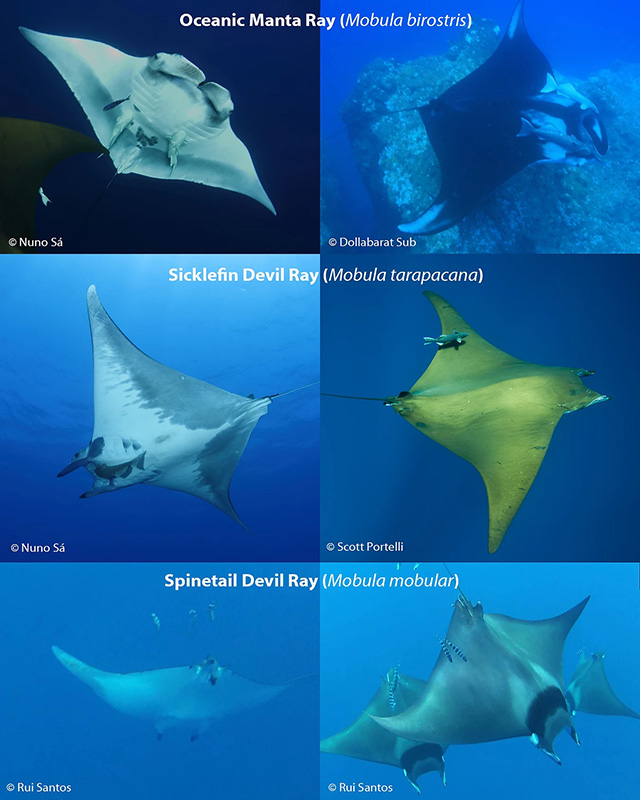
What has the project achieved so far?
Through this project, depending solely on data provided by citizen scientists, we were able to confirm, for the first time, the existence of 3 species of Mobulid rays in the Azores: the Oceanic manta ray (Mobula birostris), the Sicklefin devil ray (Mobula tarapacana) and the Spinetail devil ray (Mobula mobular). With a photographic database with around 300 different individuals of two species, we now know that photo-ID is a viable tool to study the Sicklefin devil ray and we do know that individuals return to the Azores in different years, with re-sights after up to 9 years, reinforcing the importance of these sites for these species.
Another great achievement has been to contribute to the knowledge about these species amongst the local community and the raise in awareness about the importance of the conservation of these animals.
Why did you choose to focus on the Sicklefin devil ray rather than one of the other species frequenting the Azores?
Manta Catalog Azores aims to further our knowledge on the mantas and devil rays (Mobulids) found in the Azores and the Eastern Atlantic, a region where little data is available on these animals. The shallow seamounts around the Azores are some of the few places on earth where Sicklefin devil rays gather in large groups and therefore provide a unique opportunity to study them. The other two species occurring in the Azores are sighted less often and of those only the Oceanic manta ray also has a pattern on the belly that we can use for photo-ID. However, we do collect sighting data and images of all the species sighted here.

What has most surprised you in your research into the rays?
I was surprised by them returning, sometimes after almost a decade, to the exact same place, but the most surprising and exciting thing in studying them has been that the more time I spend with them underwater and the more knowledgeable we get, the more questions I have, and the more I want to learn about them.
Do the rays migrate and if so are there other places in the world contributing to the project?
Mantas and devil rays often undertake seasonal migrations, and their movements are driven by ocean currents and food (plankton) availability. This family has very diverse and complex behaviours. Depending on the species, they can be more resident or highly migratory, being able to travel dozens, hundreds or even thousands of kilometres. They are also known to dive quite deep, the Sicklefin devil ray, for example, can dive up to 2 kilometres deep. Although the Sicklefin devil ray is highly migratory their migration patterns are still unknown to us. To try and fill that knowledge gap we are extending this work to other places in the hope to understand if the individuals we see in the Azores are seen in other places and to gain some insight into their migration routes.
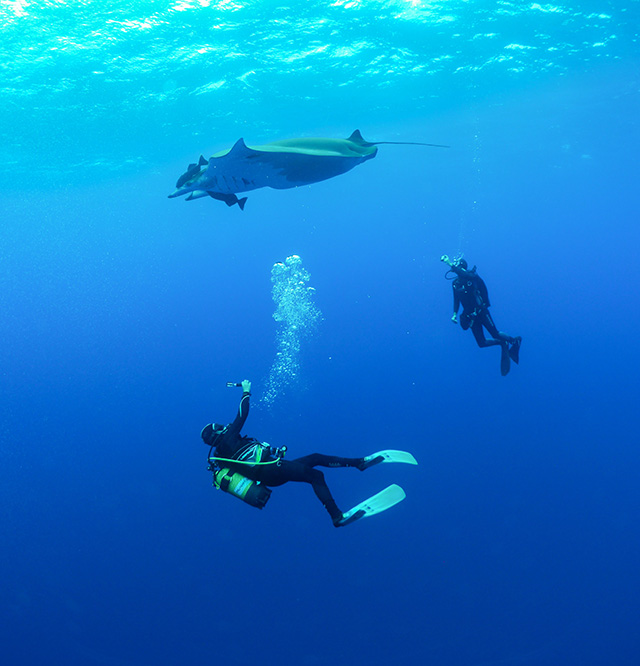
Can any diver contribute to your citizen science initiative, or do participants have to be on one of your trips?
Any diver can contribute to the project by reporting a sighting of a Mobulid ray in the Azores through the form on our website. We look for pictures of the unique patterns on the bellies of the rays so we can ID different individuals.
During the Manta Conservation Experience trips (which take place in August) divers will have a more hands-on experience on a week fully dedicated to learning more about these animals and taking part on the research work being done. For more information watch the video below or contact mantaconservationexperience@oceanario.pt
How has the pandemic affected your research?
The pandemic inevitably affected our ability to be out in the field and collect data but also the amount of data we received from divers and operators, since the number of people diving dramatically decreased during that time. 2022 will hopefully allow us to fully be back in the water collecting as much data as possible and taking more people in the water to have the magical experience of encountering these animals because they will leave as true ambassadors for the conservation of these species.
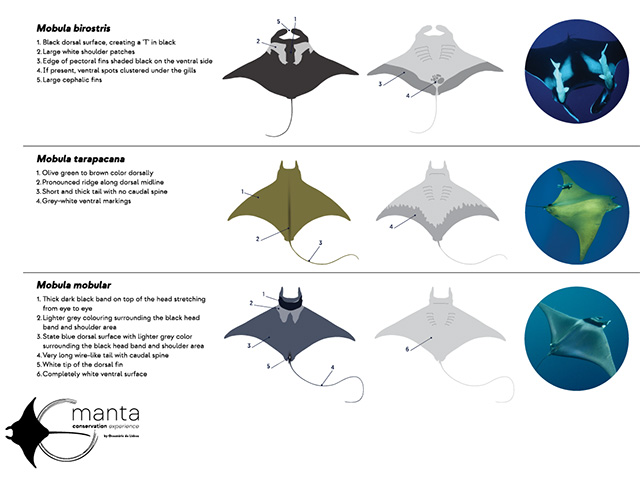
The project has been supported by the Conservation at Oceanario de Lisboa, three times voted best aquarium in the world. During the pandemic they helped develop a pilot program of conservation tourism and created the Manta Conservation Experience. (You can read our interview with Núria Baylina, head of Biology and Conservation at Oceanario de Lisboa.)
If you could dive with one person, dead or alive, who would it be?
I would love to be in the water with Dr. Sylvia Earle, she has always been a huge inspiration and always has a message full of hope for the future.
Which is your favourite dive site in the world and why?
That is a very hard question to answer, but I will say my favourite dive site in the world is “Pedrinha”, a marine reserve in the island of Santa Maria in the Azores. A sheltered rocky reef that is full of life and is never the same twice. From devil rays to colourful nudibranchs it will make any diver happy.
About Ana Filipa Sobral
Ana Filipa Sobral, marine biologist and conservationist, is based in the Azores islands. She moved to the Azores in 2011 and once there realised this was one of the few places in the world where Sicklefin devil rays (Mobula tarapacana) gather in large groups, making these aggregations strategic places to study them, and so she started Manta Catalog Azores. Through this project she collected photo-ID and occurrence data on Mobulid rays, with the precious help of divers and dive operators as citizen-scientists. She is also finishing her PhD which focused on population genetics and connectivity of migratory elasmobranchs in oceanic islands in the Atlantic Ocean. The main goal fuelling her research has been to help fill the knowledge gaps on elasmobranch biology and ecology to ultimately assist in the design of effective conservation and management plans aimed at protecting their populations in this remote region of the North Atlantic Ocean.
Main photo credit: Ana Filipa-Sobral







